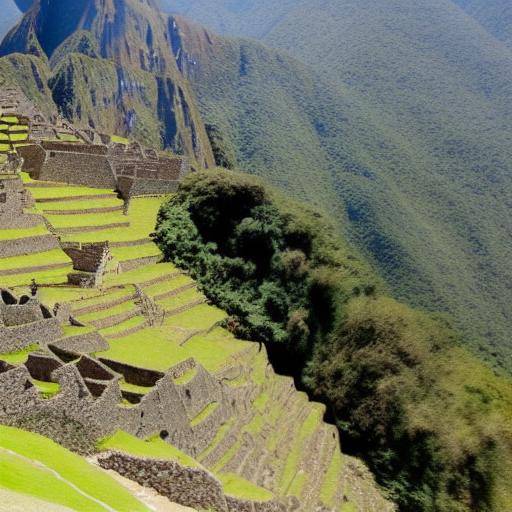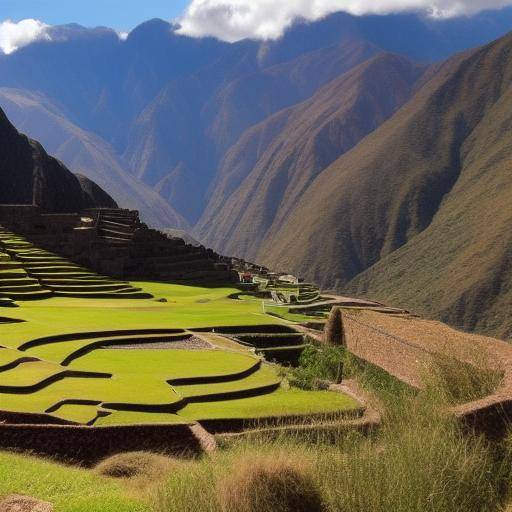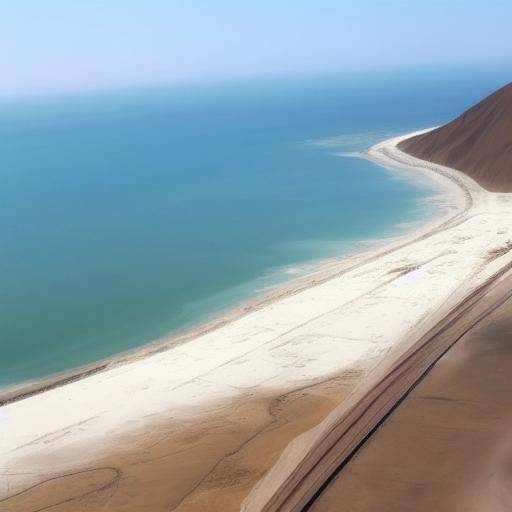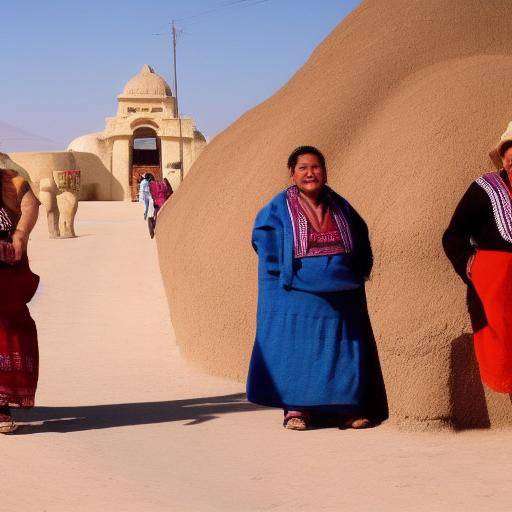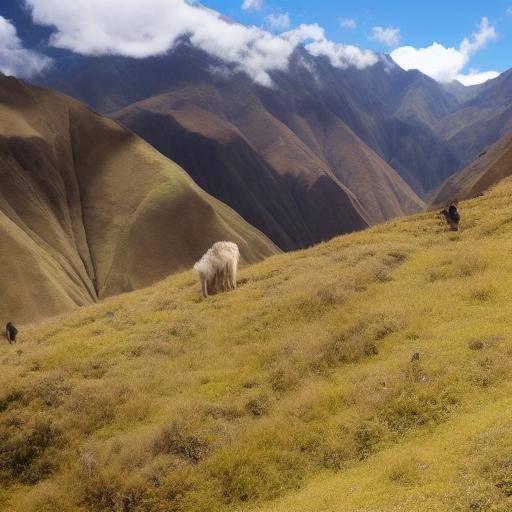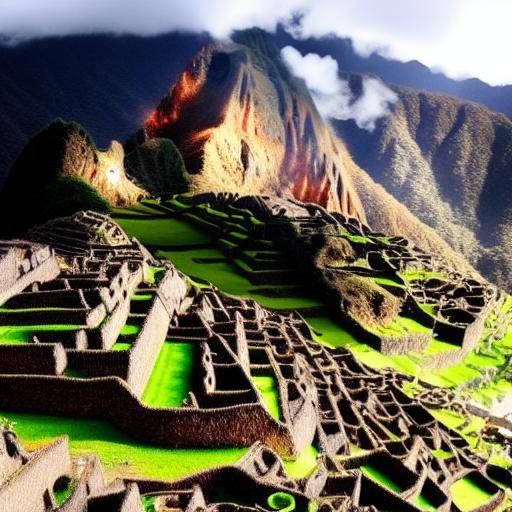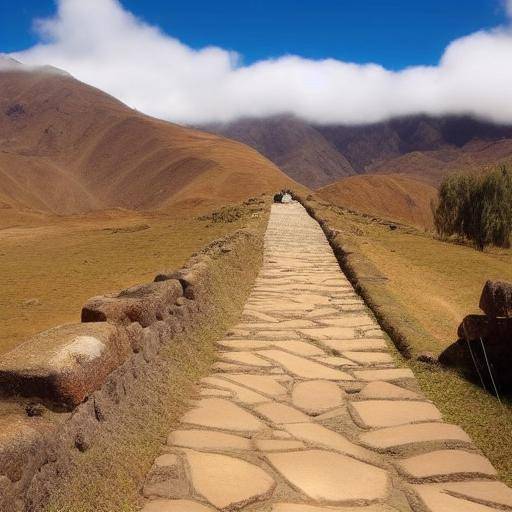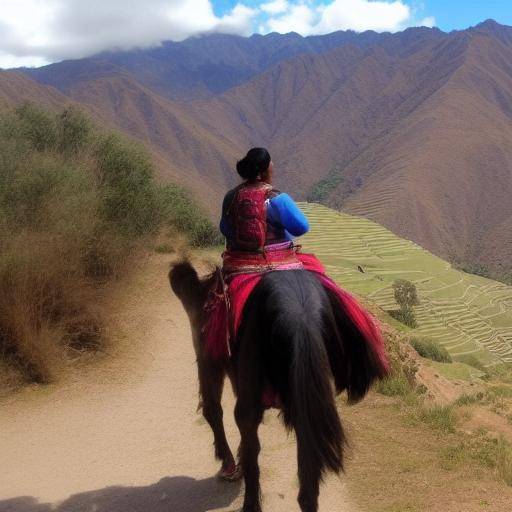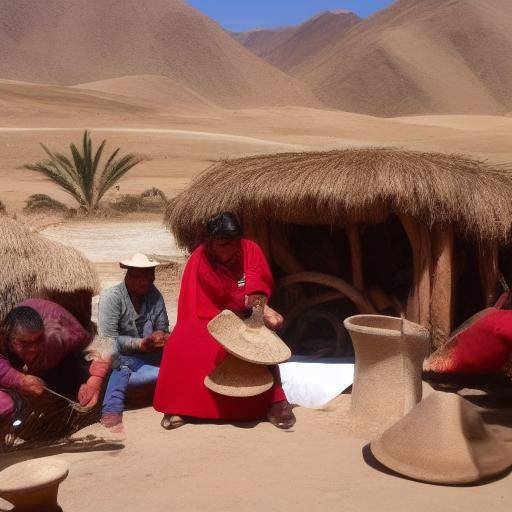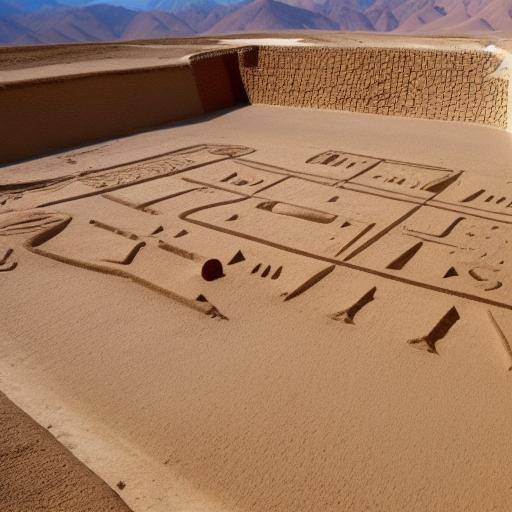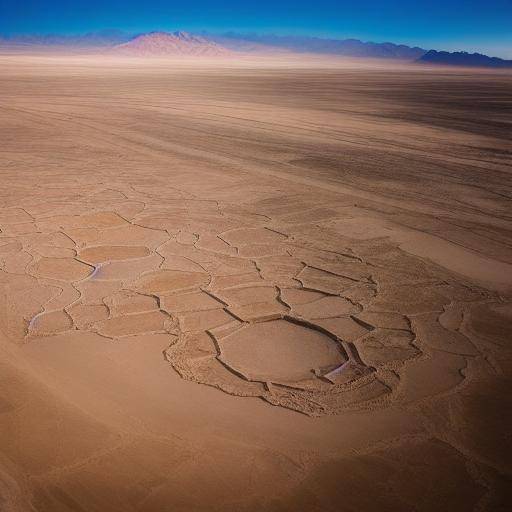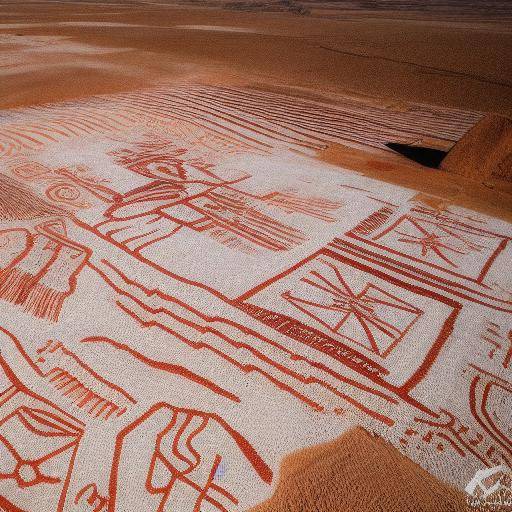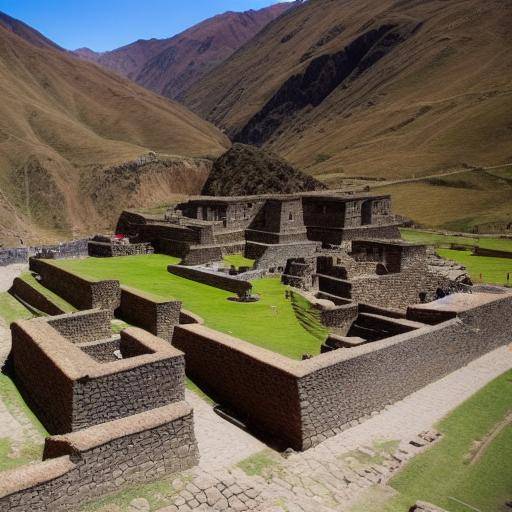
The legacy of the incas ruins of Ollantaytambo in the Sacred Valley of Peru is invaluable. With a fascinating history and imposing architecture, these ruins offer a window to the glorious past of the Inca Empire and connect us with an extraordinary civilization. In this article, we will explore in depth the history, cultural significance and architectural wonders of Ollantaytambo, all as we discover how this historic site continues to captivate those who visit it today. Prepare to embark on a journey through time as you immerse yourself in the grandeur of Ollantaytambo's incas ruins.
Introduction
Ollantaytambo, located in the heart of the Sacred Valley of the Incas, is an impressive archaeological site that awakens the awe of those who have the fortune to explore it. The vestiges of this ancient Inca city transport us to a time of splendour, where engineering and urban planning challenged all forecasts, and where religious beliefs and social organization interwoven to create a lasting legacy. Join us on this journey through the inca ruins of Ollantaytambo and discover why this site is a precious gem in the world heritage.
History and Background
Origins and Development
The inca ruins of Ollantaytambo have their roots in the time of the Inca Empire, whose grandeur and sophistication continue to amaze the modern world. The city of Ollantaytambo, built by order of the ninth inca Pachacútec, was one of the most impressive representations of the power and urban planning of the empire. The history of Ollantaytambo dates back to the 15th century, when the Inca Pachacútec ordered the construction of the city as a ceremonial and administrative center. The great urban planning and the meticulous distribution of structures demonstrate the strategic importance of this place in the Inca cosmovision.
Historical and Cultural Importance
Ollantaytambo became a bastion of resistance during the Spanish conquest, and its magnificent constructions have endured over the centuries, challenging the passage of time and keeping alive the memory of a glorious past. The city not only functioned as an administrative centre, but also had a profound religious meaning, with temples and altars dedicated to the Incas gods.
Impact of Tourism
Tourism has played a crucial role in the preservation and dissemination of the heritage of Ollantaytambo, while raising significant challenges in terms of conservation and sustainable management. The influx of tourists contributes to the local economy and raises awareness of the importance of preserving these historical sites. However, measures should also be implemented to protect the ruins of wear and degradation caused by tourism activity.
Deep analysis
Engineering and Architecture
The architectural sophistication of Ollantaytambo is a testimony of the skill and ingenuity of the incas engineers. The agricultural terraces, designed to maximize land use on the steep Andean slopes, are a wonder of hydraulic and agronomic engineering. The temples and administrative buildings, built with perfectly fitted stone blocks, reflect an advanced building technique that has resisted earthquakes and the passage of time.
Hydraulic networks
One of the most impressive aspects of Ollantaytambo is its complex network of channels and water sources. Incas engineers designed an efficient irrigation system that allowed the distribution of water from nearby rivers to crop fields and residential areas. This system not only guaranteed the availability of water for agriculture, but also demonstrated the ability of incas to manage natural resources in a sustainable manner.
Ritual and Religious Significance
The temples and altars of Ollantaytambo had a profound ritual and religious meaning. The Temple of the Sun, one of the most outstanding buildings, was dedicated to the sun god Inti and was an important center of religious ceremonies. The orientation and location of the temples reflect an advanced knowledge of astronomy and inca cosmovision, where each architectural element had a symbolic and spiritual purpose.
Comprehensive review
Conservation and Restoration
The conservation of Ollantaytambo is a continuous effort that requires the collaboration of archaeologists, historians and restoration experts. The restoration projects focus on preserving the structural integrity of the ruins while maintaining their historical authenticity. These efforts include the stabilization of structures, the repair of damages and the implementation of measures to protect the site from the effects of climate and tourist activity.
Education and Sensitization
Promoting education and awareness of the importance of Ollantaytambo is crucial for its long-term conservation. Educational programs aimed at the local community and visitors help to foster a sense of shared responsibility in the preservation of heritage. Guided tours, workshops and interactive activities allow tourists and the community to understand the historical and cultural value of the ruins.
Comparative analysis
Ollantaytambo vs. Machu Picchu
Although Ollantaytambo and Machu Picchu are both very important incas sites, they present significant differences in terms of location, function and architecture. Machu Picchu is known for its isolation and location on the top of a mountain, while Ollantaytambo is more accessible and operated as an administrative and ceremonial center. Both sites, however, share the extraordinary engineering and deep spiritual connection that characterize the inca architecture.
Ollantaytambo vs. Sacsayhuaman
Sacsayhuamán, a ceremonial fortress located in Cusco, also offers an interesting contrast with Ollantaytambo. While Sacsayhuamán is known for its huge stone blocks and defensive function, Ollantaytambo stands out for its agricultural terraces and its hydraulic network. Both sites demonstrate the adaptability and diversity of inca architecture in response to different needs and environments.
Practical Tips and Useful Recommendations
Visit Ollantaytambo
- Best time to visit: The dry season, from May to September, is ideal for exploring Ollantaytambo, as the weather is more pleasant and the rains are less frequent.
- What to wear: Comfortable clothes, footwear suitable for walking, sunscreen and a bottle of water are essential for a comfortable and safe visit.
- Local Guides: Hiring a local guide can enrich your experience by providing you with detailed and contextual information about the history and architecture of Ollantaytambo.
- Respect for the Site: It is important to follow the rules and regulations of the archaeological site to help preserve the ruins for future generations.
Industry Perspectives and Expert Reviews
Reviews of Archaeologists and Historians
Archaeologists and historians highlight the importance of Ollantaytambo as an exceptional example of inca engineering and urban planning. Their views underscore the need to continue research and conservation to discover more about the life and culture of the Incas.
Impact of Tourism on Conservation
Experts on sustainable tourism emphasize the need to balance tourism and conservation. Strategies include managing the flow of visitors, implementing responsible tourism practices and educating tourists about the importance of protecting cultural heritage.
Cases and Real Applications
Ollantaytambo Restoration Project
The Ollantaytambo restoration project has involved collaboration between the Peruvian government, international organizations and the local community. These efforts have resulted in the stabilization of structures and the improvement of facilities for visitors, ensuring that the site remains accessible and protected.
Participation of the Local Community
The involvement of the local community in the conservation of Ollantaytambo is essential for its sustainability. Programs that involve residents in preservation activities and promote community tourism have proved to be effective in protecting the site and empowering the community.
Future Trends and Predictions
Technological Innovations in Conservation
The use of advanced technologies such as drones and 3D scanners is revolutionizing the conservation of archaeological sites. These tools allow precise and detailed documentation of the ruins, facilitating the planning of restoration and conservation projects.
Virtual Tourism
Virtual tourism is emerging as a significant trend, offering immersive experiences of historical sites such as Ollantaytambo. This modality not only allows more people to explore cultural heritage from their homes, but also reduces the physical impact of tourism on the site.
Conclusions
The inca ruins of Ollantaytambo are not only a testimony of the architectural grandeur and the sophistication of the Inca civilization, but also
a continuous lesson on the importance of preservation and respect for cultural heritage. In exploring these ruins, we not only connect with a glorious past, but also assume responsibility for protecting this legacy for future generations. Ollantaytambo remains a symbol of the wonder and mystery of the inca past, inviting us to discover its secrets and to value its greatness.
Frequently asked questions
What is the story behind the inca ruins of Ollantaytambo?
Ollantaytambo was built by the Inca Pachacútec in the 15th century as a ceremonial and administrative center. Its design and architecture reflect the sophistication of inca engineering.
What makes the architecture of Ollantaytambo unique?
The architecture of Ollantaytambo is unique for its agricultural terraces, ceremonial temples and a complex network of water channels, all designed with precision and advanced knowledge of engineering and urban planning.
What is the best time to visit Ollantaytambo?
The best time to visit Ollantaytambo is during the dry season, from May to September, when the weather is more favorable to explore the ruins.
What impact does tourism have on Ollantaytambo?
Tourism has a significant impact both positive and negative. While contributing to the local economy and raising awareness of the importance of the site, it also poses conservation challenges that need to be carefully managed.
What measures are being taken to preserve Ollantaytambo?
Various conservation measures are being implemented, including restoration projects, monitoring the status of educational structures and programs for the community and visitors.
Is it possible to visit Ollantaytambo in a sustainable way?
Yes, it is possible to visit Ollantaytambo in a sustainable way following the regulations of the site, respecting protected areas, hiring local guides and participating in responsible tourism activities.
Exploring the inca ruins of Ollantaytambo is an experience that transcends time, offering a deep connection with an ancient civilization and its extraordinary achievements. By visiting this stunning site, you not only immerse yourself in history, but also become part of its continued preservation and legacy.

